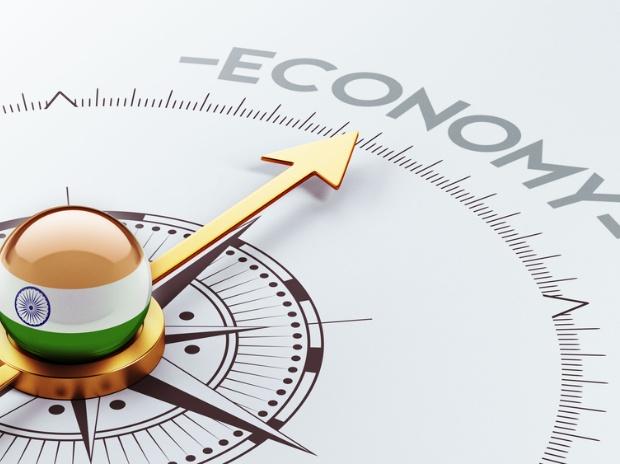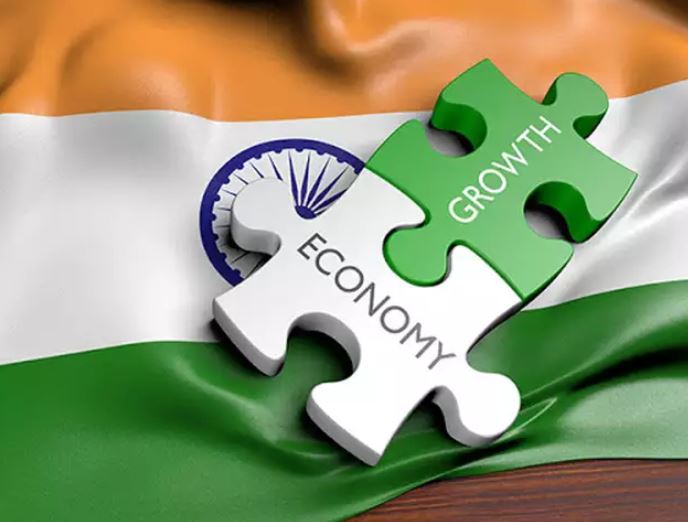Prof Ujjwal K Chowdhury
(Summary of the keynote address by the author in the Dhanam BFSI Summit and Awards at Le Meridian on February 27, 2020)
Indian economy is a wee above Rs.180 lacs crores or in other words, USD 2.8 trillion at this point of time (China is more than five times of this!). The current government has pegged it to grow to an ambitious USD 5 trillion within 2025. And this has become fashionable to discuss why it can be so and how it should be steered to be so. So, let’s join the gang and make a realistic assessment about this. It is more important in the current context of Corona Virus induced virtual lockdown of educational institutes and a large part of the formal and informal economy in the country.
To achieve 5 trillion GDP by 2025, we need a GDP growth-rate per year to the tune of 11.5%, whereas we are now at 4.7% in the last quarter, and the maverick ruling party MP, Dr Subramaniam Swamy would want us to believe that it is merely 1.5%! So, one thing is clear that the economy will surely touch 5 trillion, but when no one can be sure about.
The growth rate of India has drastically declined over the last 10 quarters from a high level of 8%+ to today 4%+, and one point of time earlier in the 2010s, Indian economy had even touched 10% growth-rate! The current slowdown, which the Finance Minister also now does not negate, is clearly a challenge but the jury is divided on whether it is structural (which is a bad news and will take a long time to revive and recover) or cyclical (which is usual and manageable over a period of time). The growth rate has declined for several quarters now, all core sectors of the economy are down, consumption rate is on a decade long lowest, and joblessness is at a half century highest rates, according to the government statistical body NSSO.
T0 achieve a 5 trillion economy in half a decade, the average inflation rate every year has to be low, which is now thankfully at 4% while the global average is below 3%. Also, the average exchange rate of a dollar in rupee must be below Rs.70, which is slightly more now. The volatility of both these rates can spell doom for the 5 trillion dream.
India has a light dependency burden and that is a good news. With half the population below 25 years, two-thirds below 35 years, and three on five in the most productive age of 18 to 55 years, the dependency load of kids below 15 and seniors above 65% is truly quite low in India, making it one of the youngest nations of the world. Whether we can maintain this demographic dividend for long, and whether we can educate and skill up this youth force are the two pertinent questions here. But fundamentals of demography are in our favour. It must be noted that Japan, Korea, China, Taiwan etc grew faster in the 20th century since 1960 due to low dependency load and a large youth force, now ageing.
The other enabling factor is the ease of doing business. Government of India rightly abolished 1300 obsolete laws, and we have gone 65 positions up in the ease of doing business index. But still 115 districts are extremely backward on the 49 crucial indicators of education, health, skills, nutrition, etc. Without lifting them up, India cannot go among the first 30 nations on this parameter, only then can India gets into the developed nations club.
Urbanization is another reality of our times. Urban centres occupy only 4% of earth mass but account for 81% of the global GDP today. Hence, urbanization has come to occupy centre piece in the quest for higher GDP growth, which again has to be sustainable yet rapid to be a long term development. Indian government had promised in the last tenure to bring about 100 Smart Cities and ensure a Swachh Bharat campaign to clean up India, focus being on urban centres. In the current tenure, the government has promised to bring in 100 lacs crores worth infrastructure to change the face of Urban India. But to be truly a 5 trillion economy with a planned sustainable base, government needs to bring in massive recycling of water, recycling and upscaling of waste, and create multiple sources of renewable energy, solar being a primary source. Focus on these are yet to be seen except in bits and parts.
 India’s share in global exports is merely 3%. Indian economy is domestic market driven (above 70% of the GDP)) which has the good point of internal strength and protection from external economic shocks, but is limited by the fact that India, unlike China, misses the high price benefits of exports. Real unit value enhances several times when exports happen and large scale production can happen. Even art and craft of India can bring in far more exports earning than what it is doing now.
India’s share in global exports is merely 3%. Indian economy is domestic market driven (above 70% of the GDP)) which has the good point of internal strength and protection from external economic shocks, but is limited by the fact that India, unlike China, misses the high price benefits of exports. Real unit value enhances several times when exports happen and large scale production can happen. Even art and craft of India can bring in far more exports earning than what it is doing now.
Less than 20% of Indian women work in the economy outside their homes, while the number is around 48% globally. This 30% gap is making India lose an estimated value of $700 billion of GDP which itself can drag the current GDP higher by 25%.
For GDP revamp and growth, agrarian economy of India is still a major domain to look at with 58% of the population being involved in agriculture directly or indirectly, a large part of them being impoverished landless agricultural labourers. Agrarian economy of India is largely of the 20th century though the third decade of the 21st century is on and the government has promised infusing 25 lakhs crores worth investment here though currently the agricultural sector earns a meagre turnover of less than 3 lakhs crores a year. The investment sources hence are still unknown. The sector needs a quick revamp of technology, better organized markets, contract farming at a large scale, and a more robust roads infrastructure.
The ill-conceived demonetization of 2016 has brought about several governance challenges through an unforeseen liquidity crisis, coupled with an ever-changing hastily executed GST regime which later brought in its course unpaid GST revenues of the state governments by the Centre. Loss of jobs, joblessness being the highest in 45 years, decline in mass consumption (lowest in last 12 years) and high Non Performing Assets (NPAs) in banks are the other sources of governance challenges. These need to be fixed, contained and situation somewhat ameliorated, though the impact cannot be reversed.
Immediate measures to boost consumption hence is an extreme necessity, rendered worsened by the Corona virus fear just now. The government has wrongly focused in recent times only on the supply side of the economy through cuts in corporate tax and production incentives. What we actually need is a demand side boost. So, assured Work for Wages in MNREGA scheme in rural India which has come to an average of 45 days a year must first and urgently raised to the original 100 days a year and then 120-130 days a year to infuse purchasing power in the hands of the rural folks. Compulsory education up to Class XII and 18 years of age, as per the Directive Principles of State Policy, and right to basic health need to be protected and enhanced. This can only happen by rapid upgradation of public health and educational facilities, as being done in Delhi state. The Basic Minimum Income Guarantee, called as NYAY scheme by the main opposition party, Congress, is another mechanism to guarantee higher average income and hence a boost in consumption of the people of the hinterland and even in urban slums. Further, increasing the income tax exemption levels (which was expected in the last budget but was not done) is another way to boost the economy. Taxing people around Rs.25,000 monthly income is ludicrous in today’s time, especially in urban and semi-urban India. Higher rural infra spending and lower interest rates on loans as per international standards and norms will help higher circulation of money and hence higher consumption and a boost to GDP growth and thereby the Indian economy.
There is also the need for rapid digitization to achieve 5 trillion economy at an early date (though 2024-25 is impractical today). Digitization will enhance speed, transparency, and decrease delays and corruption in all business transactions. This will also boost globalization.

Alongside, as a long term measure, the economy to grow fast needs trained skilled manpower for various sectors. Hence, higher education in India must move from degree-centricity to skills-centricity, education combining experiential or learning by doing pedagogy with brick and mortar classroom learning, and click and portal digital learning. The Corona virus induced lockdown of schools, colleges and universities is allowing the rapid use of Edtech and that is a positive outcome of this crisis. Higher education also must integrate entrepreneurship skills, communication skills, and techno-savvy approach to prepare a different quality of human resources for an economy of almost double the size of what it is today.
The author is a regular commentator, television debater, and a media academic, currently working as Pro Vice Chancellor of Kolkata based Adamas University.






















